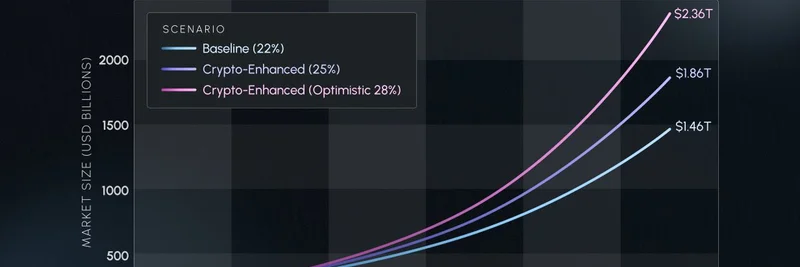In the fast-paced world of meme tokens and blockchain innovations, creator coins on Base have been generating a lot of buzz. But is the hype justified? Crypto AI enthusiast and founder of Amplifi, Graeme (@gkisokay), recently shared a candid thread on X that pulls back the curtain on the current state of the Base creator coin meta. Check out the full thread here to see his unfiltered thoughts.
Graeme argues that while the onchain creator economy represents a staggering trillion-dollar opportunity, the way Base creator coins are being handled right now is far from sustainable. Drawing from his earlier insights, he emphasizes how AI and crypto are converging to reshape creation, earning, and work itself. But speculation is overshadowing real utility, and that's a recipe for trouble.
Unpacking the Trillion-Dollar Onchain Creator Economy
Let's break it down. Graeme references reports from heavyweights like Goldman Sachs and McKinsey, projecting the Web2 creator economy to balloon from around $200 billion today to $1.5 trillion by 2035—at a compound annual growth rate (CAGR) of about 22%. Factor in crypto's onchain elements, like creator coins and audience ownership, and we're talking an additional $400 billion to $1 trillion in value over the next decade.
What makes this exciting for meme token fans? Platforms like Base (built on Ethereum) and tools from @pumpdotfun are pushing boundaries with streaming and onchain monetization. Imagine meme creators launching their own tokens that give fans real stakes, turning viral moments into lasting economies. But as Graeme notes, we're still in the early innings—the onchain creator space is under $2.5 billion today, leaving a massive 500x growth potential.
To visualize this, here's the chart Graeme shared in his quoted post, outlining growth scenarios:
The baseline (blue line) shows steady growth, but crypto-enhanced scenarios (purple shades) could push it to $2.3 trillion in an optimistic case. This isn't just pie-in-the-sky; it's backed by AI transforming jobs—up to 30% of white-collar and blue-collar roles could shift, funneling more talent into creative, onchain pursuits. DeFAI (decentralized finance meets AI) will make high-yield opportunities accessible to all, supercharging this shift.
The Harsh Reality of Base Creator Coins Today
But here's where Graeme gets real: the Base creator coin meta "isn’t ready for the way it’s being treated." Infrastructure is lacking, and maybe only 0.1% of these coins offer genuine utility. The rest? Pure speculation. This mirrors the wild days on Solana, where memecoin launchpads exploded in 2024, often leaving retail investors holding the bag after sophisticated players sniped, bundled, or front-ran trades.
Graeme calls out the backlash against Base and its lead @jessepollak for promoting low-effort tokens. Veteran traders from cycles like 2013, 2017, and 2021 see the red flags—retail gets dumped on, eroding trust. "This isn’t how we bring the world onchain," he warns. Onboarding new users means educating them, not just hyping buys. Without proper systems, the dream of invisible crypto adoption (where people use blockchain rails without knowing it) could fizzle.
A reply from @keli88888 echoes this sentiment: "truth. solana scars taught us build anti-snipe rails now or watch the $1T dream fizzle." It's a nod to Solana's "scars"—past rug pulls and sniper bots that plagued memecoin launches. For meme token practitioners, this is crucial: building anti-snipe mechanisms and fair launch protocols isn't optional; it's essential for longevity.
Lessons from Solana and the Road Ahead
Solana's memecoin era was organic but chaotic, fueled by cheap tokens and regulatory gray areas. Base is facing similar scrutiny, but Graeme tips his hat to protocols and launchpads actively combating extractors. Think bonding curves on pump.fun or Zora's creator tools—these are steps toward a more equitable space.
For blockchain builders and meme enthusiasts, the takeaway is clear: prioritize education, protection, and infrastructure. Real utility in creator coins could include fan governance, exclusive content drops, or revenue shares—turning memes from jokes into viable businesses. Without these, we risk alienating the very users who could propel the onchain economy to that trillion-dollar mark.
Graeme wraps up optimistically: "The ocean ahead is blue." It's early, and with the right fixes, the onchain creator economy could redefine work in our AI-crypto future. If you're diving into meme tokens or creator coins, heed these warnings—speculation might offer quick wins, but sustainability builds empires.
Stay tuned to Meme Insider for more breakdowns on emerging trends in the meme token world. What's your take on Base creator coins? Drop your thoughts in the comments!



